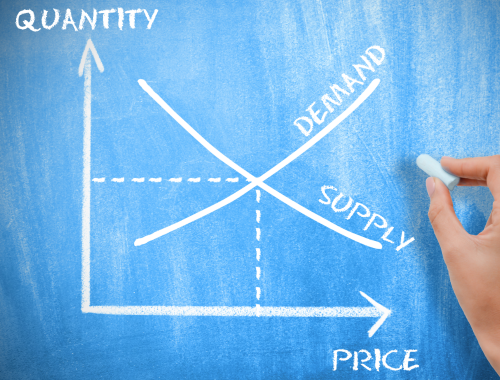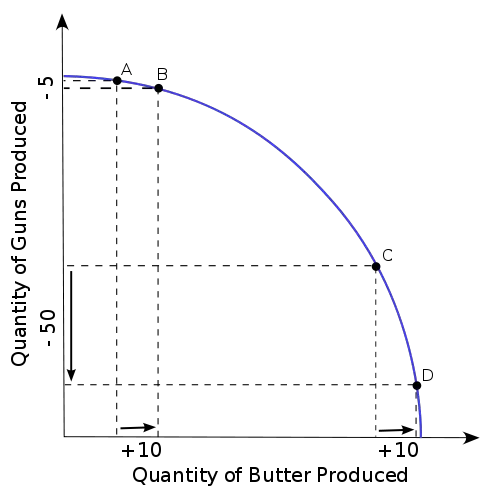
What is “Quantity Demanded”?
The amount of a good or service that people are prepared and capable of purchasing at a given price during a specific period is known as quantity demanded (The Economic Times, 2023). Economists often depict this amount as a downward-sloping curve known as the demand curve, which exhibits the link between the price of a commodity and the quantity that consumers want to buy. As the price of a product decreases, buyers generally want more of it, resulting in an upward trend in quantity demanded. In contrast, as the price rises, the quantity demanded tends to decline, indicating an inverse relationship between price and quantity demanded.
The quantity demanded serves as a valuable tool for sellers in determining the optimal and competitive price to quote to consumers. It helps increase sales, drive growth, and generate income, thereby enabling sellers to formulate a comprehensive pricing policy. To ensure effective pricing policy, it is crucial to consider price elasticity concerning the quantity, which helps to produce the right amount of goods and services to be sold at the appropriate price, catering to consumer demand while avoiding resource waste. This approach also helps to maintain and increase overall profitability. The seller can track the price offered to buyers for various levels of quantity demanded and plot a demand curve based on the data collected. Any changes in the levels of demand can be effectively illustrated on the demand curve. It is important to note that the price elasticity is represented by the slope of the demand curve (Srivastav, 2023).

What is “Demand”?
Demand pertains to the willingness and ability of consumers to buy a product or service within a certain timeframe, taking into account their disposable income budget. This factor plays a crucial role in determining economic growth and market expansion, making demand a vital driving force in the market (Paulus, 2023).
The factors that influence demand include:
- Consumer income: The purchasing power of consumers directly affects demand, as those with higher incomes can generally afford to purchase more goods and services.
- Price: Generally, a decrease in the price of a product or service results in an increase in the quantity demanded, while an increase in price leads to a decrease in demand.
- Availability of substitutes: The presence of substitute products in the market can impact demand, as consumers may switch to a similar but cheaper alternative, causing a decrease in demand for the original product.
- Advertising and marketing: Effective advertising and marketing strategies can increase consumer awareness and generate demand for a product or service.
- Demographic factors: Age, gender, and location are examples of demographic factors that can influence demand, with different groups having distinct preferences and tastes that can impact demand.
- Consumer preferences and tastes: The preferences and tastes of consumers play a critical role in determining demand, with popular or trendy products typically experiencing higher levels of demand.
What are the Similarities between Quantity Demanded and Demand?
Similarity in Terms of What is Measured
Both quantity demanded and demand are measures of how consumers respond to price and income changes.
Similarity in Terms of Illustration
Both quantity demanded and demand may be visually represented through graphs.
Similarity in Terms of Law of Demand
Both quantity demanded and demand are influenced by the law of demand (as the price decreases, the quantity demanded or demand increases and vice versa). Hence, they are both affected by related factors such as income and consumer preferences.
Summary:
- Quantity demanded is the amount of a good or service that people are prepared and capable of purchasing at a given price during a specific period.
- Both quantity demanded and demand are similar in terms of what is measured, illustration, and law of demand.
- Demand pertains to the willingness and ability of consumers to buy a product or service within a certain timeframe, taking into account their disposable income budget.
Frequently Asked Questions:
What is relation between demand and quantity demanded?
The law of demand depicts the inverse relationship between the price of a product or service and the quantity demanded, which can be visualized using the demand curve. Typically, as the price of a product or service rises, the quantity demanded drops, while as the price falls, the quantity demanded increases.
What are the similarities and differences between demand and supply?
Regarding similarities, demand and supply play crucial roles in determining the equilibrium price and quantity in a market. They are influenced by various factors like price, income, preferences, and expectations. Graphical representation through supply and demand curves is commonly used to depict both concepts. As for differences, demand represents the consumer’s viewpoint and signifies the amount of a product or service consumers are willing and capable of purchasing at a particular price during a specific period. On the other hand, supply reflects the seller’s perspective and refers to the quantity of a product or service producers are willing and capable of offering at a given price within a specific timeframe.
Is quantity and quantity demanded the same?
Demand is a wide-ranging concept that includes all potential prices and quantities that consumers are capable and willing to buy, whereas quantity demanded refers to the precise amount of a product or service that consumers are purchasing at a specific price point.
How is change in quantity demanded similar to and different from a change in demand?
A change in quantity demanded occurs when there are movements along the demand curve due to price fluctuations. In contrast, a change in demand occurs when the entire demand curve shifts due to factors beyond price. Price is the only influence on changes in quantity demanded, whereas changes in demand are influenced by a range of factors that impact consumers’ willingness and ability to buy at different price levels.
What kind of relationship does demand and quantity have in supply and demand?
Within the supply and demand framework, demand and quantity have a direct relationship. When the price of a product declines, consumers typically show an inclination to demand a greater quantity, while an increase in price generally leads to a decrease in the quantity demanded.
What is the relationship between price and quantity demanded on the demand curve Why?
The relationship between price and quantity demanded on the demand curve is inverse; this is primarily driven by the law of demand, which states that consumers are generally more willing to purchase a product or service at lower prices and less willing at higher prices.
What is the relationship between price and quantity demanded when demand is perfectly elastic?
In situations where demand is perfectly elastic, the connection between price and quantity demanded is highly responsive and sensitive. Even a minor adjustment in price results in an infinite alteration in the quantity demanded.
What is the relationship of price & quantity on demand and supply?
As the price of a product or service decreases, consumers typically exhibit a higher desire to purchase a larger quantity, whereas an increase in price generally results in a decrease in the quantity consumers are willing to demand.
Conversely, with regards to supply, as the price of a product or service increases, producers generally tend to supply a greater quantity, whereas a decrease in price typically leads to a reduction in the quantity supplied by producers.












Leave a Reply